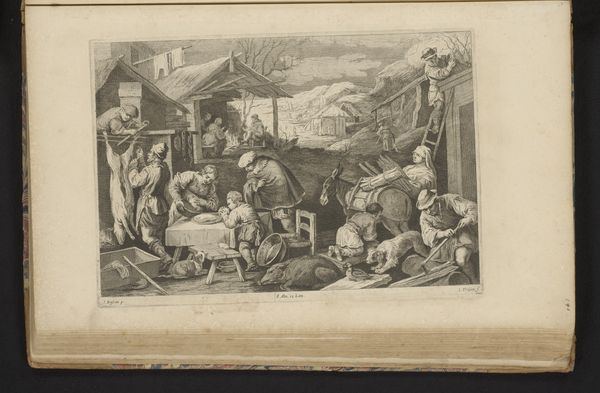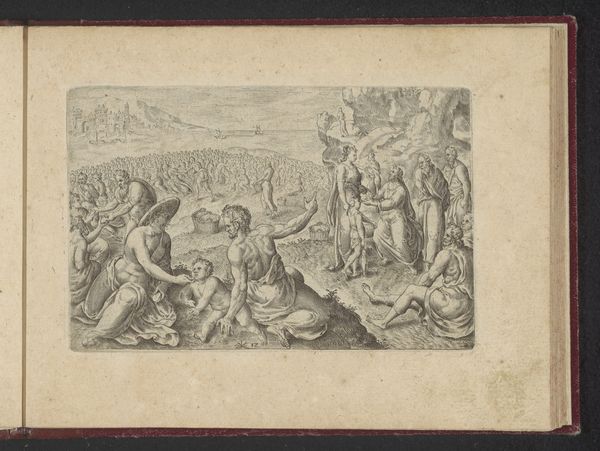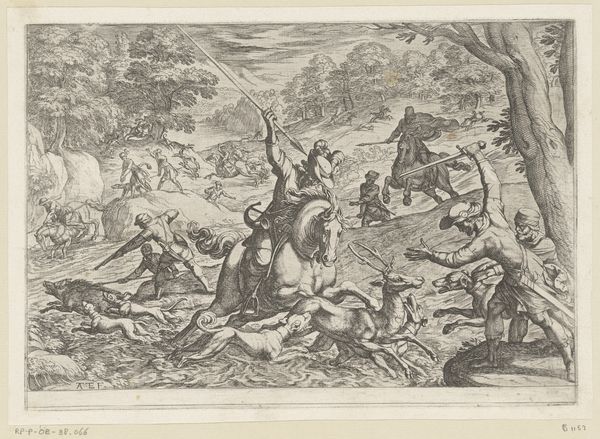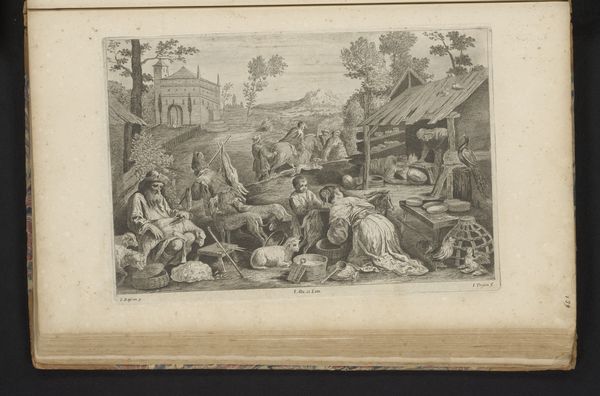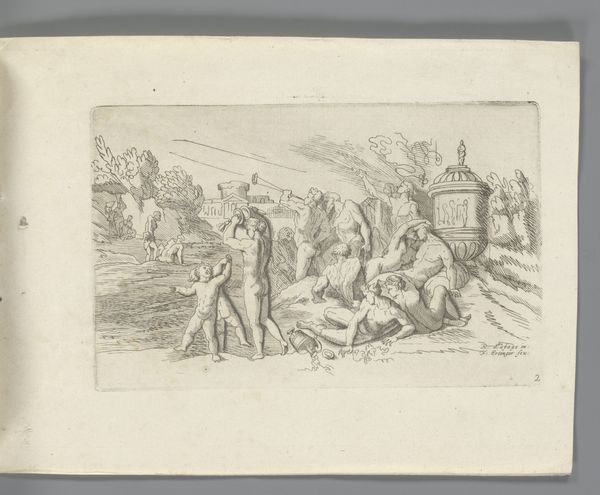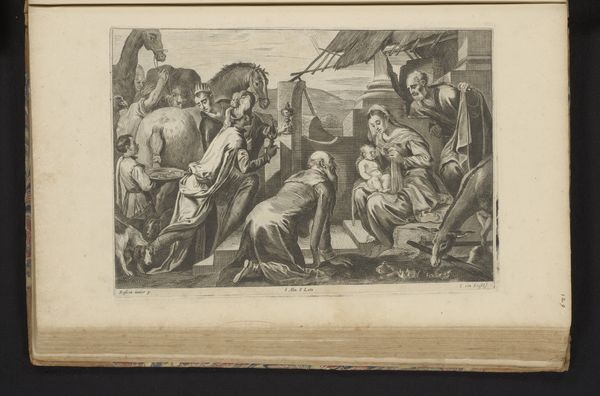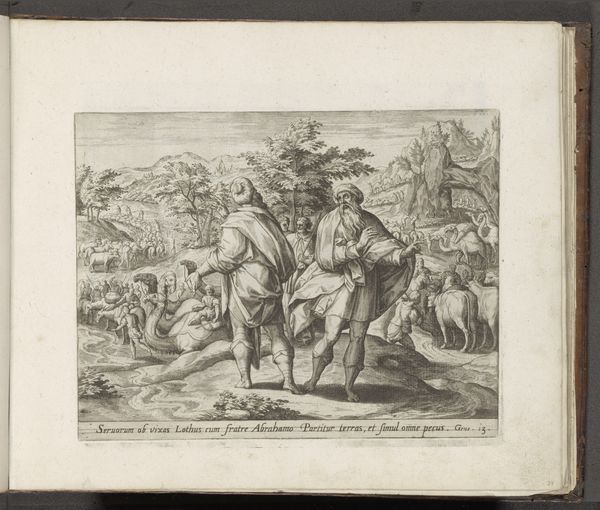
drawing, print, etching, paper, ink
#
drawing
#
narrative-art
#
baroque
#
dutch-golden-age
# print
#
etching
#
landscape
#
figuration
#
paper
#
ink
#
genre-painting
#
realism
Dimensions: height 220 mm, width 313 mm
Copyright: Rijks Museum: Open Domain
Editor: This is "Zomer," or "Summer," a 1660 etching by Jan van Ossenbeeck. The composition feels really balanced, with detailed scenes of labor across the landscape. It almost romanticizes rural life. How do you interpret this work? Curator: This image teems with symbols rooted in the cultural memory of the Dutch Golden Age. Look at the sheep being sheared; the sheep is one of the oldest religious symbols in history, representing both innocence and sacrifice. Editor: So, the act of shearing is more than just practical? Curator: Precisely. It connects to ideas of pastoral life, divine provision, and even the vulnerability of humankind. Consider also the image of harvest, as well as that of simple family in the lower left -- the scene presents us a kind of arcadia. Do you think that it can exist or only exists in our imagination? Editor: I guess it reflects an ideal more than a reality, a desire for simpler times. Curator: And those desires are incredibly powerful, aren't they? This artist evokes an enduring set of cultural aspirations: prosperity, family and a harmony with the natural order. How can the visual language of a single image resonate for centuries? That's the core mystery for me. Editor: I hadn't thought about how layered even a simple pastoral scene could be. Curator: These scenes solidify collective memories and cultural values. Editor: Thanks, that was really insightful!
Comments
No comments
Be the first to comment and join the conversation on the ultimate creative platform.






